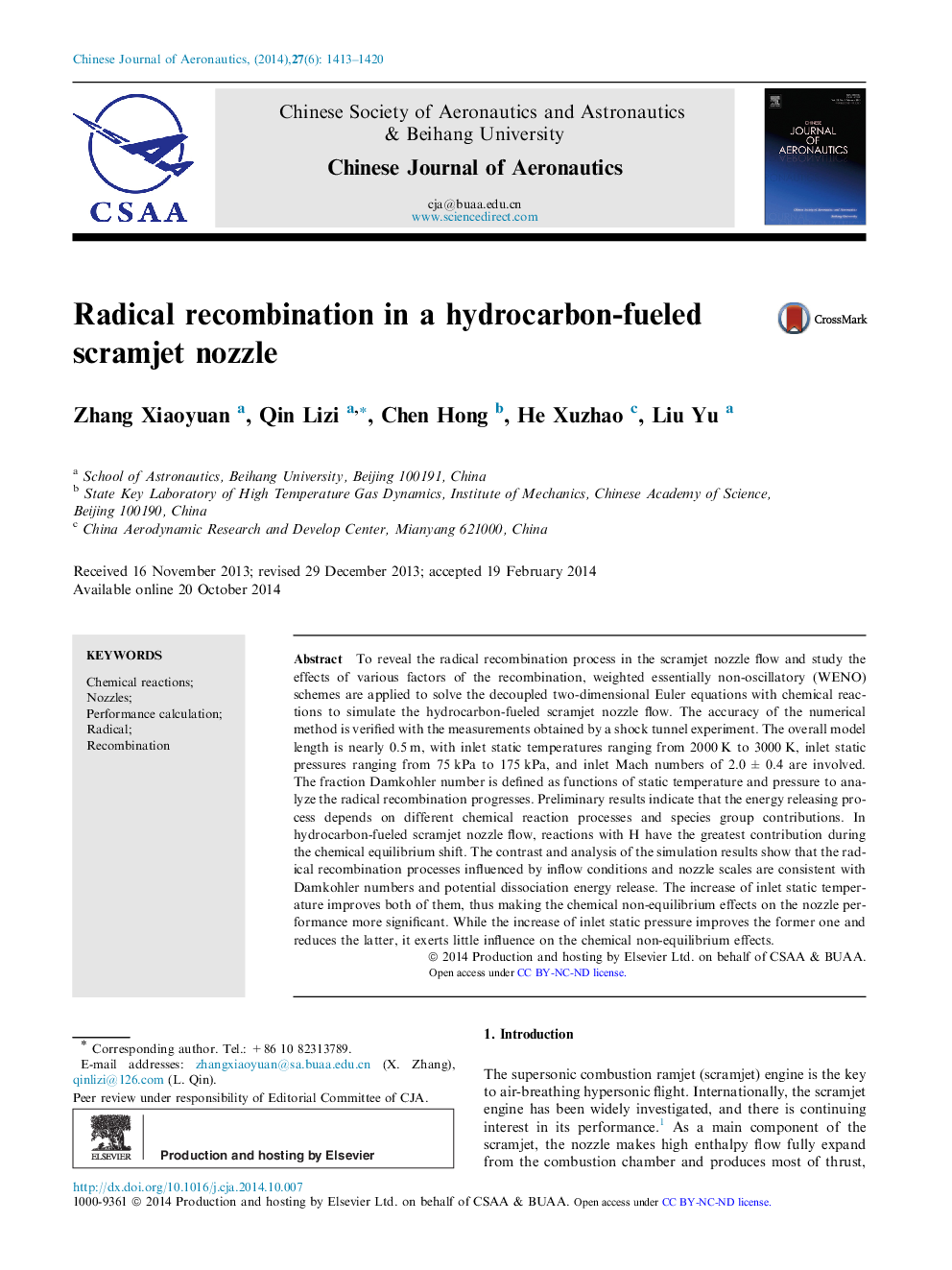| Article ID | Journal | Published Year | Pages | File Type |
|---|---|---|---|---|
| 765834 | Chinese Journal of Aeronautics | 2014 | 8 Pages |
To reveal the radical recombination process in the scramjet nozzle flow and study the effects of various factors of the recombination, weighted essentially non-oscillatory (WENO) schemes are applied to solve the decoupled two-dimensional Euler equations with chemical reactions to simulate the hydrocarbon-fueled scramjet nozzle flow. The accuracy of the numerical method is verified with the measurements obtained by a shock tunnel experiment. The overall model length is nearly 0.5 m, with inlet static temperatures ranging from 2000 K to 3000 K, inlet static pressures ranging from 75 kPa to 175 kPa, and inlet Mach numbers of 2.0 ± 0.4 are involved. The fraction Damkohler number is defined as functions of static temperature and pressure to analyze the radical recombination progresses. Preliminary results indicate that the energy releasing process depends on different chemical reaction processes and species group contributions. In hydrocarbon-fueled scramjet nozzle flow, reactions with H have the greatest contribution during the chemical equilibrium shift. The contrast and analysis of the simulation results show that the radical recombination processes influenced by inflow conditions and nozzle scales are consistent with Damkohler numbers and potential dissociation energy release. The increase of inlet static temperature improves both of them, thus making the chemical non-equilibrium effects on the nozzle performance more significant. While the increase of inlet static pressure improves the former one and reduces the latter, it exerts little influence on the chemical non-equilibrium effects.
